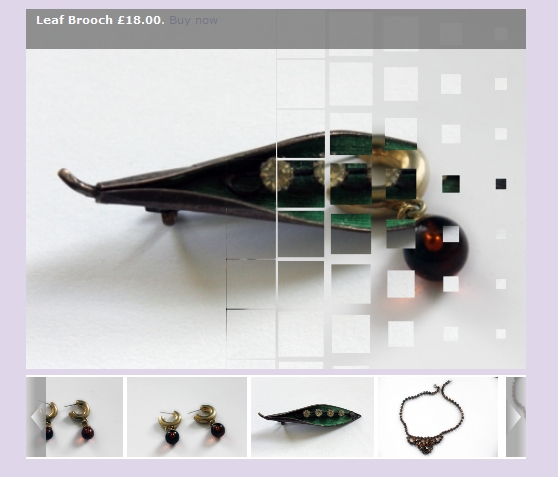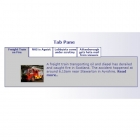Our Extensions for Virtuemart
Virtuemart is a popular open source e-commerce extension for the Joomla! content management system. We have a number of extensions written explicitly for Virtuemart that will enhance your store:-
- VM2 Product Snapshot allows you to embed Virtuemart product information in Joomla content articles. As a content plugin it is compatible with the Joomla core content component as well as extension that support content plugins, such as K2.
- HTML5 Slideshow for Virtuemart 2 displays your product images in an attractive HTML5 slideshow. It is compatible with all modern browsers including mobile devices and will display a simplified version in older browsers such as IE7. It is a great way to show off your products without using Flash.
- Virtuemart Featured Product Grid is an alternative to the Virtuemart featured products module. It can be used to show featured products, top ten products, recent products, and random products from some or all categories. The module is particularly useful when you want to display additional images for your products, as these are shown in a scroller.
- VM ModController Pro This module allows you to control the display of other Joomla modules on Virtuemart pages. It allows you to assign modules to Virtuemart pages (including specific product details flypages or category browse pages), categories, and shopper groups.
- GoogleBaseXML This component for the Joomla Content Management System generates a product data feed for your Virtuemart store in XML format. It is specifically designed to be compatible with the format required by Google shopping. The product listing can be manually uploaded, or submitted as an URL to Google Merchant Center for scheduled upload
You can view examples of these extensions in our Virtuemart Extensions Demo Store.
Below: A screenshot of our HTML5 slideshow for Virtuemart

Add a comment
Google Merchant Center - How It Can Work For You
Google offers a variety of online facilities in addition to its general search functions. If you are selling products online, one facility that you should definitely be be aware of is the Google Merchant Center. This is a tool which allows you to upload your product listings to be used in Google Product Search, Google Product Ads, and Google Commerce Search. So what are these, and why might you want to use them?
Google Product Search
Google Product Search is a service designed to helper users locate products online, currently available for the following countries: USA, UK, France, Germany and Japan. Listing is free to merchants, you just need to upload the product information to Google. Shoppers can access by clicking on the 'Shopping' link on Google's front page, it is the e-commerce equivalent of Google's website search results. Since the only cost is the time it takes to submit your products, there is little downside to using this service, and a strong reason to do so, since it provide an additional way for potential customers to find your products.
Add a comment
Our Featured Items Range
Our featured items range of modules are designed to give you the flexibility that you need in displaying Joomla articles.
They allow you to display selected Joomla articles in a variety of formats, including tab panes, accordions, carousels and slideshows. The modules are designed to allow you the greatest possible flexibility in the way you select your Joomla articles, either selecting from one or more categories or sections, or displaying your chosen list of articles. These articles can be displayed in a variety of orderings, and you can choose the exact amount of text to display, ranging from a short extract to the entire article text. You also control whether or not to display a thumbnail, and the thumbnail size.
The modules also have a number of other useful features, including the ability to dynamically resize and cache images, and to trigger content plugins. As well as displaying content from the Joomla Core Content component, the modules can display articles from Mighty Extensions Resources, and we plan to support additional CCKs in the future.
Featured Items Suite

As a special offer you can buy the complete suite in a single pack for a bargain price of £35.00. For this you get: mod featured items, mod featured items pro, mod featured items carousel, mod featured items slideshow and mod newstab. Plus as a bonus you get two of our other Joomla extensions, com jigsaw (a Flash puzzle game for Joomla) and mod random mp3 (an mp3 player module).
Add a comment
Browser Detection in Joomla
It is often the case that as web developers we need to add some extra coding that will deal with the quirks of particular web browsers . Using Joomla we can take advantage of Joomla's built in browser detection.
Browser detection is handled through the JBrowser class. The is located in Joomla's class library, in the environment subpackage. In order to use it you will first need to import it:-
jimport('joomla.environment.browser');
Then you need to get an instance of the browser object
$browser = &JBrowser::getInstance();
You can then find information about the web browser being used through examing the properties of this object, which are accessed through the appropriate 'get' method. The methods include:-
- getPlatform: returns the browser platform ('win','mac' or 'unix');
- getBrowser: returns the browser type ('opera','palm','msie', 'amaya', 'fresco', 'avantgo', 'konqueror', 'mozilla', 'lynx', 'links', 'hotjava', 'up','xiino', 'palmscape', 'nokia', 'ericsson', 'wap', 'imode', 'blackberry', 'motorola', 'mml');
- getMajor: returns the major version number;
- getMinor: returns the minor version number.
To give an example, a very common application is that you wish to load a separate stylesheet for users of Internet Explorer 6, to deal with its annoying quirks.
Example
jimport('joomla.environment.browser');
$doc =& JFactory::getDocument();
$browser = &JBrowser::getInstance();
$browserType = $browser->getBrowser();
$browserVersion = $browser->getMajor();
if(($browserType == 'msie') && ($browserVersion < 7))
{
$doc->addStyleSheet( 'css/ie6.css' );
}
If there is a particular quirk that you wish to deal with, such as lack of support for alpha transparency in png images (a common complaint with IE6), you can use the getQuirks() method:-
If($browser->getQuirks('png_transparency'))
{
$doc->addScript( 'js/pngfix.js' );
}
Other useful methods are:-
- isRobot(): returns true if the user agent is in fact a robot;
- isSSLConnection(): returns true if the connection is SSL.
- hasFeature('feature'): returns true if the browser supports the feature 'feature', which can include among others ('iframes', 'frames', 'javascript','java', 'images', 'dom, 'svg'')
Limitations
The browser object uses the reported user agent to detect this information, this information is under the control of the client so there is no guarantee that it is true. In particular you need to be careful using the hasFeature() method. For example the reported value for hasFeature('javascript') does not take account of the fact that users can choose to disable scripting on a browser that will support javascript.
Add a commentChanging your PHP configuration
You can change the PHP configuration on your site by creating a text file called 'php.ini', which goes in the root folder of your site. You use this to set the options when PHP is run on your site: there are a huge number of these.
Some useful ones are:-
- display_errors=0
- This stops error or warning messages being displayed - you may want to do this on a production site because these messages give attackers information about your server
- allow_url_fopen=0
- This stops your files from being accessed remotely through a PHP include - again this will help your site security
- memory_limit=32M
- Increases the amount of server memory available to your script (the default is 8 MB)
- upload_max_filesize=8M
- Increases the maximum upload file size (the default is 2 MB)
You can find further information on this in the official PHP documentation, available from PHP.net.
Add a comment





